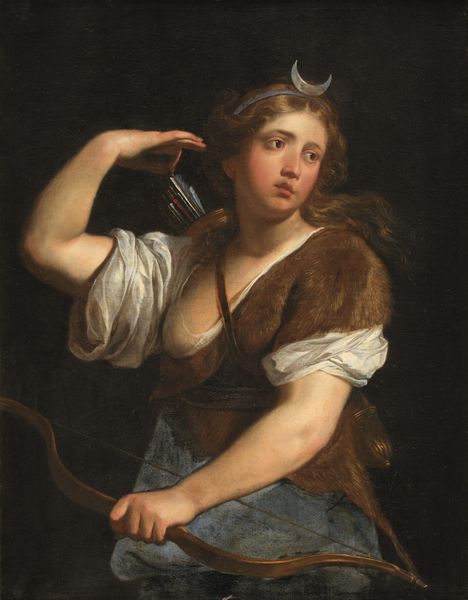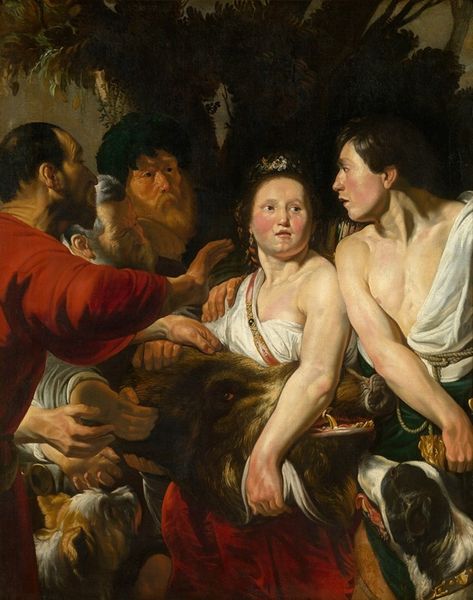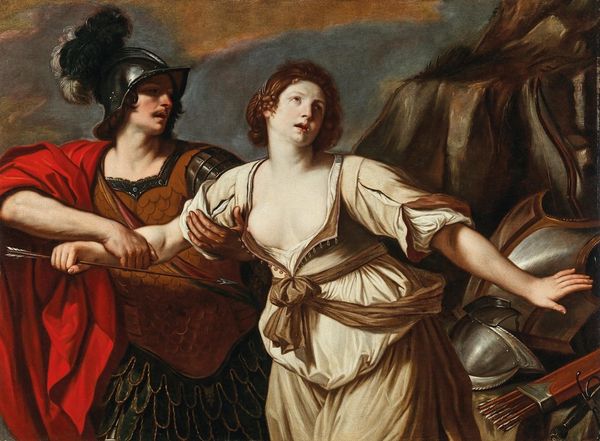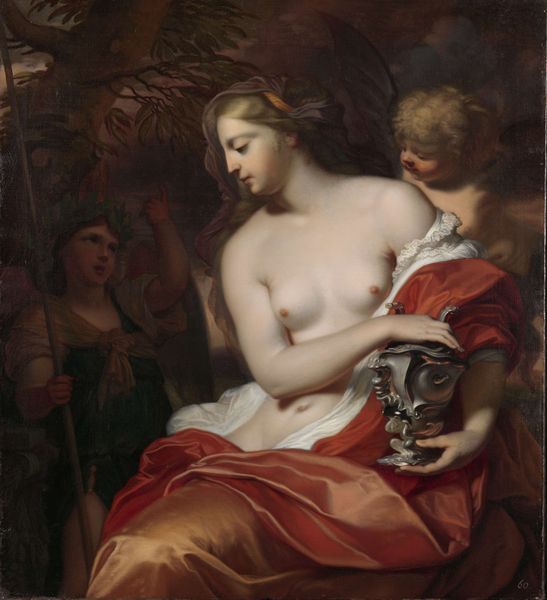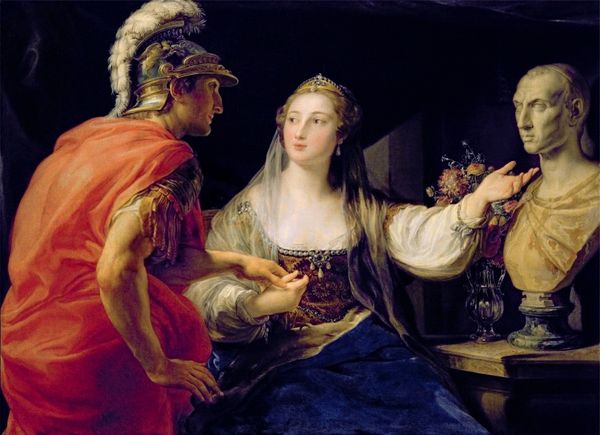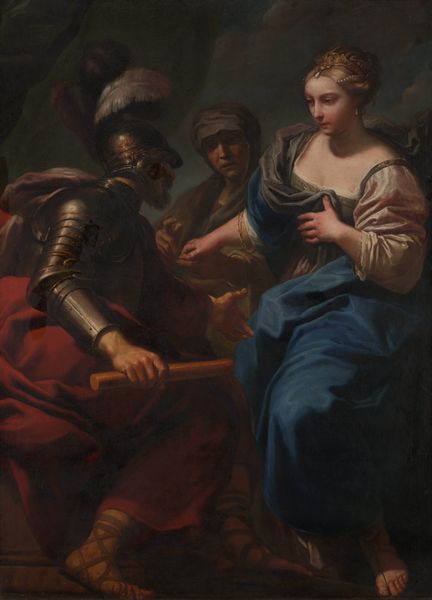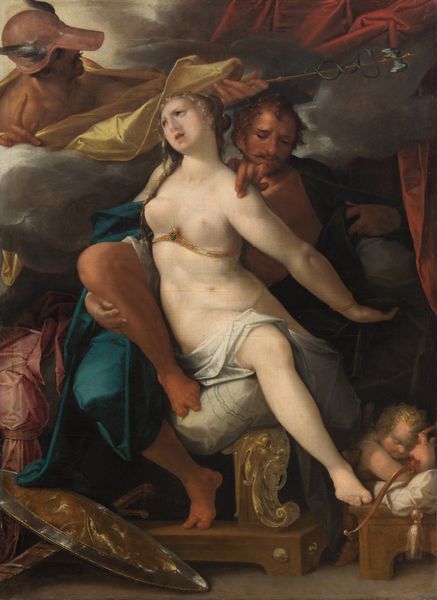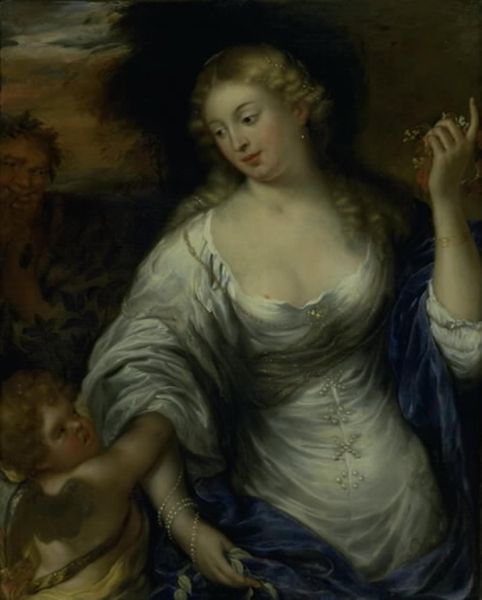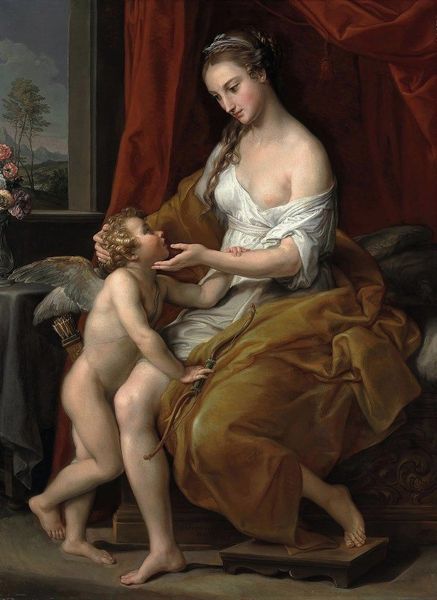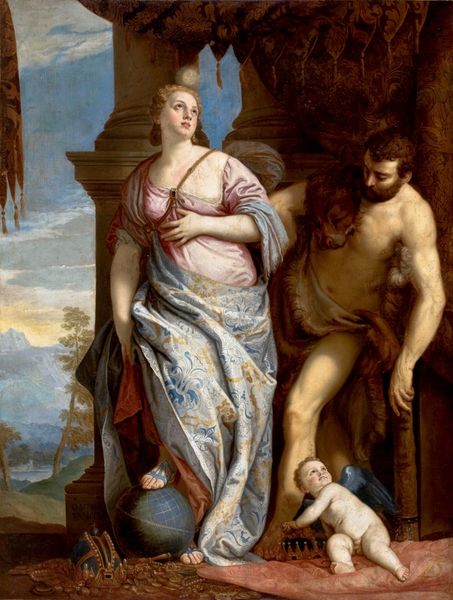
painting, oil-paint
#
allegory
#
baroque
#
painting
#
oil-paint
#
figuration
#
history-painting
#
nude
Dimensions: 43 × 35 1/2 in. (109.22 × 90.17 cm) (canvas)54 5/8 × 46 5/8 × 2 1/2 in. (138.75 × 118.43 × 6.35 cm) (outer frame)
Copyright: Public Domain
Giovan Gioseffo dal Sole painted "Judith with the Head of Holofernes" using oil on canvas. Here, Judith holds the severed head of Holofernes, an Assyrian general she has just killed to save her city. This image is laden with symbols of power, violence, and salvation. Note the sword Judith wields, a classical symbol of justice and authority. The motif of a woman holding a sword, or presenting a severed head, resonates with figures like Salome or even the Gorgon Medusa. This motif taps into ancient fears and fascinations with female power. Consider the emotional impact. The detached gaze of Judith, the gruesome head, and the lurking figures in the shadows evoke a psychological drama. These symbols—the sword, the head, the gaze—recur throughout art history, echoing through time. Each appearance subtly shifts in meaning, shaped by the cultural and historical context, yet they retain a connection to our collective memory. The enduring presence of these symbols reminds us that the past is never truly gone, but rather it resurfaces, evolves, and takes on new guises in the ever-turning wheel of history.
Comments
minneapolisinstituteofart about 2 years ago
⋮
The Jewish heroine Judith saved her city of Bethulia when it was besieged by the Assyrians. Sneaking behind enemy lines, she feigned loyalty to the Assyrian general Holofernes, who became enamored of her. After a banquet, when he was weak with drink, she beheaded him. Giovan Gioseffo dal Sole depicts Judith after the slaying, when she triumphantly entered Behulia’s city gates to display the head of the vanquished enemy to her fellow Israelites. The artist represents Judith as a brave and sensual heroine. Looking directly at the spectator, she calmly brandishes a sword in one hand and gestures with the other to Holofernes’ decapitated head, held in a sack by her maidservant. Judith’s powers of seduction are glimpsed in the treatment of her gown, pulled down to reveal a bare breast. Scholars have noted that Judith’s drapery here closely resembles a famous sculpture type known as "Venus Genetrix," or “Venus the Mother,” well known in the Renaissance and Baroque periods from many extant ancient Roman copies of the cult statue and celebrated for its beauty.
Join the conversation
Join millions of artists and users on Artera today and experience the ultimate creative platform.
